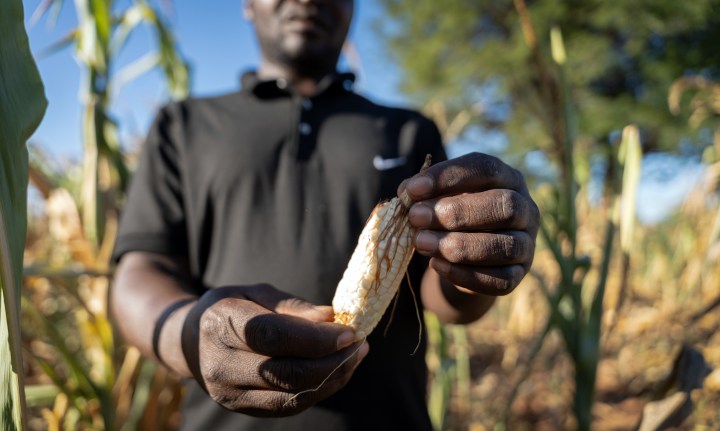BURNING ISSUE
El Niño has ended but the full wrath of its economic and social impact is still to come

El Niño has ended, according to Australia’s weather service. But the consequences of this latest version of the global weather pattern will be felt for a long time. These include a fuelling of food inflation in South Africa sparked by a scorched maize crop and critical shortages of the staple in neighbouring countries.
El Niño is dead, but its legacy will be long lived.
Australia’s Bureau of Meteorology said on Tuesday, 16 April, that the weather phenomenon, triggered by a warming of surface temperatures in the eastern Pacific, had ended. This heralds what is known as the El Niño-Southern Oscillation (ENSO) neutral phase.
“The tropical Pacific Ocean has returned to ENSO-neutral according to the latest monitoring,” the service said, though its statement had yet to be confirmed by other weather organisations.
The other phase in this trifecta of global climate patterns is La Niña, which arises from a cooling of surface temperatures in the eastern Pacific. La Niña typically brings drenching rains to southern Africa, and the last prolonged one was a key reason why South African commercial maize and other farmers had three bumper harvests on the trot.
The forecasts have been for El Niño to fade between April and June with La Niña expected to reemerge shortly after, but such predictions are never set in stone.
El Niño years are followed by La Niña years about 40% of the time. Various forecasts, including from the Climate School at Columbia University, predict La Niña will begin again between July and September.
El Niño by contrast usually brings drought to this region, and the 2023/24 El Niño left its mark after forming 10 months ago in June 2023. That is an average time span, but this event was anything but average and has been rated by the World Meteorological Organisation as one of the five strongest on record.
Maize futures up
Its consequences include a South African maize harvest forecast to be almost 20% lower than last year’s. Worryingly, output for the staple white maize has been pegged at 26% lower, and if the crop turns out to be even worse, domestic supplies will be very tight.
Markets have responded accordingly and South African white maize futures are up around 36% so far in 2024, according to data provided by Barchart.com, as earlier optimism about the production outlook evaporated when drought set in over the grain belt in February.
This in turn will add to price pressures in a few months at the retail level, just as food inflation in South Africa has been slowing. Against the backdrop of fading prospects for US rate cuts soon, this means that hopes for the South African Reserve Bank (SARB) to start trimming have also been pushed back to later in the year.
The climate can have an impact on your credit card and home bond.
Meanwhile, the maize forecasts in Zimbabwe, Zambia and Malawi are even worse, and such countries will have to look beyond South Africa for supplies, raising the very real prospect of rising hunger in the region. And the Kariba Dam is only 13% full, so it can’t generate any power at the moment for Zimbabwe and Zambia.
That also underscores the impact on wildlife in the region – wild animals are pretty sensitive to drought – and while El Niño is a natural phenomenon, the scientific consensus is that its increasing strength is not and is linked to anthropocentric climate change.
The effects of the most recent El Niño will long be felt elsewhere.
Cocoa prices have soared four-fold over the past 12 months to record highs because of extreme weather in West Africa, while some coffee futures have also scaled new peaks on account of heatwaves in Vietnam.
That will have a lasting impact on millions of small-scale farmers, while the retail prices for chocolate and coffee will go through the roof.
These are just some of the tracks that the 2023/24 El Niño will leave on the regional and global economic and ecological landscape. For South Africa and its neighbours at least, there is hope that La Niña will form in time for the spring and early summer rains. But it won’t immediately wash away the legacy of its polar opposite. DM


















 Become an Insider
Become an Insider
Anthropocentric means what?
The author may have meant “anthropogenic” which would mean human caused. Anthropocentric means focused on humans. So, in this context, the cause of the climate issue is anthropogenic while the response or effect is anthropocentric (if one excludes all other life than humans, our pets and the plants we eat).